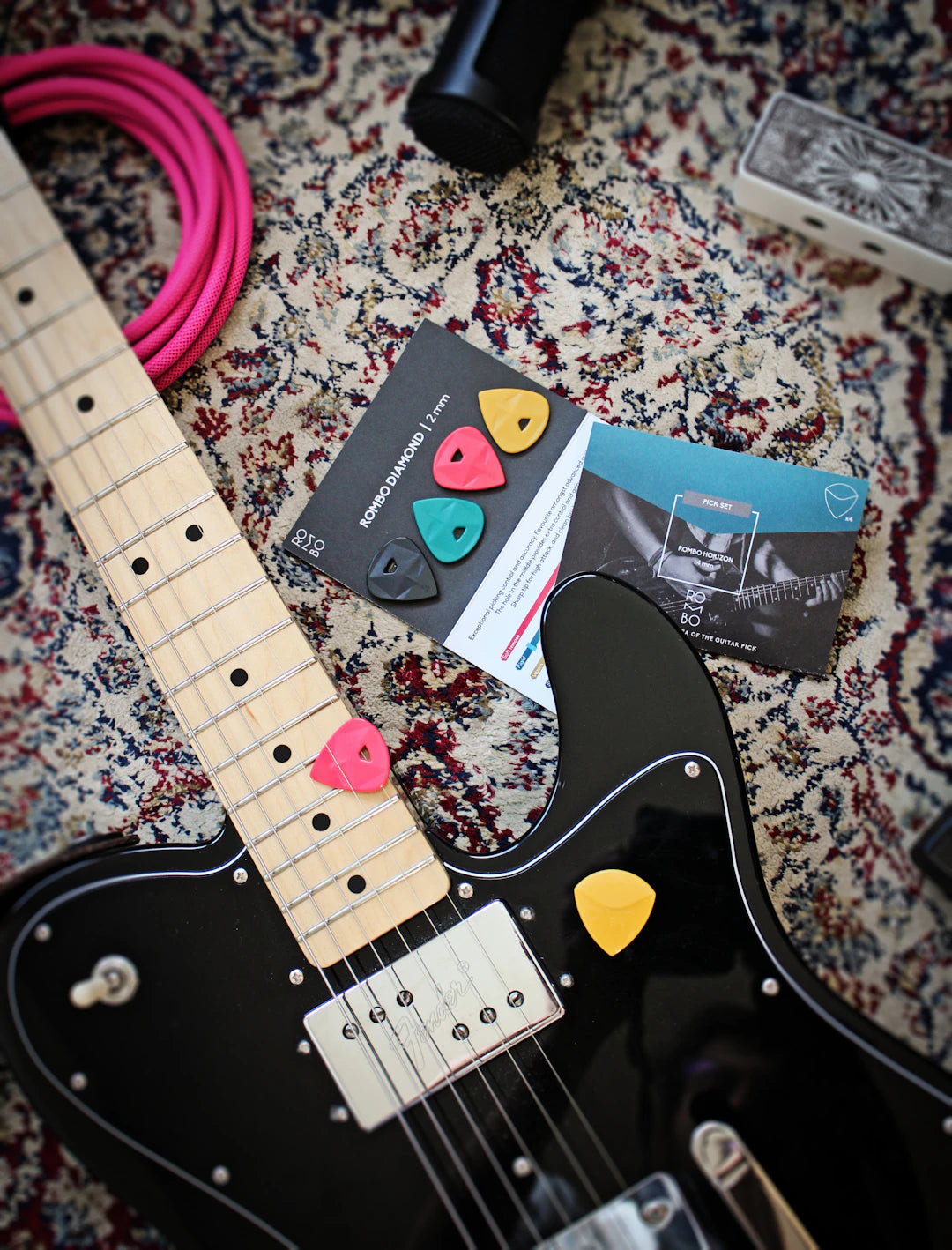Overview
Learn how to wire guitar pickups effectively with this guide, covering the basics of guitar pickups, wiring diagrams, customization options, troubleshooting common issues, and advanced techniques for enhancing your sound.
Frequently Asked Questions
1. What are guitar pickups?
2. Why are wiring diagrams important for guitar pickups?
3. What are the basic components of a guitar wiring diagram?
4. How can I customize my guitar using wiring diagrams?
5. What tips can help me with successful guitar wiring?
Understanding the wiring diagrams for guitar pickups can feel daunting, especially for beginners. However, mastering this aspect of guitar customization can lead to incredible results, offering you the ability to create a unique sound tailored to your playing style. In this guide, we'll explore everything you need to know about guitar pickup wiring diagrams, focusing particularly on custom guitar pickups and how they can enhance your guitar's performance.
What Are Guitar Pickups?
Guitar pickups are electronic devices that capture string vibrations and convert them into electrical signals. These signals are then amplified, producing the sounds we associate with electric guitars. While there are various types of guitar pickups, including single-coils and humbuckers, the main focus of this guide will be on how to effectively wire them for optimal performance.
Understanding Wiring Diagrams
A wiring diagram visually represents how the components of your guitar's electronic system connect with each other. For beginners, it serves as a roadmap for understanding how to hook up pickups, pots, and switches, ensuring that everything functions correctly. A basic understanding of these diagrams will empower you to experiment with different setups tailored to your specifications.
The Importance of Wiring Diagrams
- Visual Clarity: They simplify the wiring process, making it easier for beginners.
- Customization: They allow you to experiment with different pickup configurations, including custom pickups for Stratocaster.
- Problem Solving: If something goes wrong, having a wiring diagram helps identify issues quickly.
Basic Components of a Wiring Diagram
To better navigate wiring diagrams, it’s crucial to understand the main components involved. Here are some essentials:
- Pickups: The heart of your guitar's sound. Understanding how to wire both single-coils and humbuckers is integral.
- Guitar Pots: These are variable resistors used to control volume and tone. They affect how the electrical signal is managed.
- Switches: Commonly known as pickup selectors, these allow you to toggle between different pickups.
- Output Jack: The connection point to your amp, transmitting the final signal.
Common Types of Guitar Wiring Diagrams
Single Coil Wiring Diagram
A single-coil pickup, known for its bright sound, is often used in genres like rock and blues. Wiring a single coil involves connecting the hot and ground outputs to your guitar's circuit. Here’s a simplified step-by-step:
- Identify the pickup - note the hot and ground wires.
- Connect the hot wire to the input of the volume pot.
- Connect the ground wire to the back of the volume pot.
- Ensure that the output jack is connected to the output of the volume pot.
Humbucker Wiring Diagram
Humbuckers are designed to cancel out unwanted noise, making them a popular choice for a warmer, fuller sound. The wiring for humbuckers is a bit more complex; here’s how it typically goes:
- Identify the two wire pairs (typically one for each coil).
- Connect the hot wire to the volume pot's input.
- Connect the ground wires together, grounding them to the volume pot.
- Wiring to an output jack connects similarly to the single-coil setup.
Customizing Your Guitar with Wiring Diagrams
Once you're familiar with the basic diagrams, customizing your guitar guitar pickups can take your playing experience to new heights. Consider the following when customizing:
- Pickup Configuration: Experiment with different configurations such as series or parallel wiring, or blend different types of pickups.
- Pots and Switches: Switch out the pots for higher quality components to improve tonal response.
- Capacitors: Upgrading capacitors can also modify the tone, offering more versatility.
How to Read a Wiring Diagram
Guitar wiring diagrams may seem complicated at first glance, but they follow specific symbols and notations. Here's how to decode them:
Common Symbols
- Circles: Usually represent connections. A line connecting two circles indicates a physical wire.
- Lines: Solid lines show connections; dotted lines usually indicate grounding.
- Letters: Often denote specific components, e.g., "P" for pots, "SW" for switch.
Reading Example Diagrams
When looking at diagrams, start at your pickups and follow the path to the output jack. Each connection point will indicate where wires should be stripped and soldered. Recognizing common layouts will significantly reduce the time spent figuring things out.
Tips for Successful Wiring
As you embark on your wiring journey, keep these practical tips in mind:
- Take Your Time: Rushing leads to errors. Take your time to ensure all connections are clean and accurate.
- Solder with Care: If you're soldering, ensure a solid connection. Poor solder joints can lead to unwanted noise or even complete failure.
- Use Quality Materials: Invest in good quality pickups and components. Although you can find cheaper options, high-quality components often provide better sound and durability.
Troubleshooting Common Wiring Issues
Even the best wiring setups can encounter issues. Here's how to troubleshoot common problems:
Noise Interference
Noisy pickups can be frustrating. This often relates to grounding issues or interference from other electronics. Try using shielded wiring and make sure all ground connections are secure.
Volume and Tone Issues
If your volume or tone pots are not functioning as intended, check the connections on the pots themselves. Loose or cold solder joints can lead to inconsistent performance.
Dead Pickups
If a pickup is producing no sound, double-check the connections from the pickup to the volume pot. A broken wire or cold solder joint could be the culprit.
Exploring Advanced Wiring Techniques
Once you're comfortable with basic wiring, consider tackling advanced techniques to further enhance your guitar's capabilities.
P90 Wiring
P90 pickups offer a unique sound and character compared to standard pickups. Wiring P90 pickups often involves understanding how to integrate them into your existing setup while ensuring compatibility with other components.
Installing a Kill Switch
For those interested in adding effects and enhancing performance live, installing a kill switch can be a fantastic addition. It allows you to cut the sound quickly, creating a stuttering effect that offers great creative control.
Series and Parallel Wiring
Understanding the differences between series and parallel wiring can unlock a range of tones. Series wiring increases output, while parallel wiring maintains a clearer sound. Discovering how to change your setup between these two configurations will give you versatility and depth in your playing.
Your Newfound Knowledge
By now, you should have a solid understanding of wiring diagrams for guitar pickups. This basic knowledge opens up a world of possibilities, allowing you to create custom pickups for Stratocaster or modify any guitar to suit your style and needs. Don’t hesitate to experiment with different configurations. The more you practice, the better your wiring skills will become, and soon you'll be able to design your perfect sound! Embrace the adventure of guitar customization and make your instrument truly your own!
Linked Product
Odyssey Traditions 1957 Stratocaster Pickup Set
The Odyssey Traditions 1957 Stratocaster Pickup Set offers a classic sound that is ideal for guitarists looking to achieve a vintage tone. This set features three single-coil pickups that are designed to enhance clarity and responsiveness, making it suitable for a variety of musical styles. When paired with the wiring diagrams discussed in our guide, these pickups can help beginners easily understand and implement their guitar's wiring for optimal performance.
View Product










